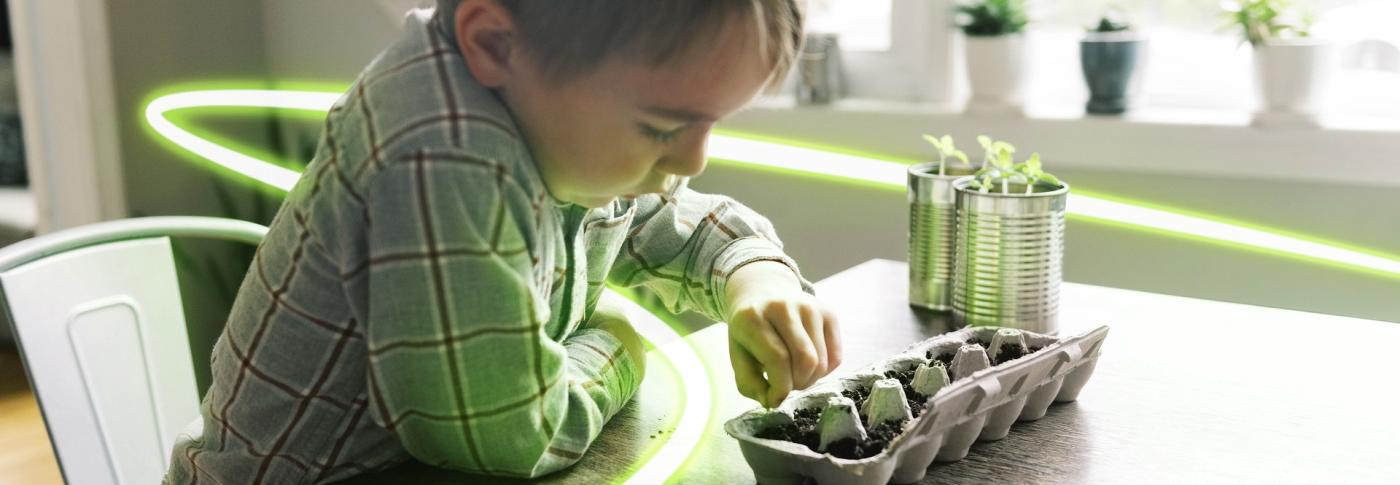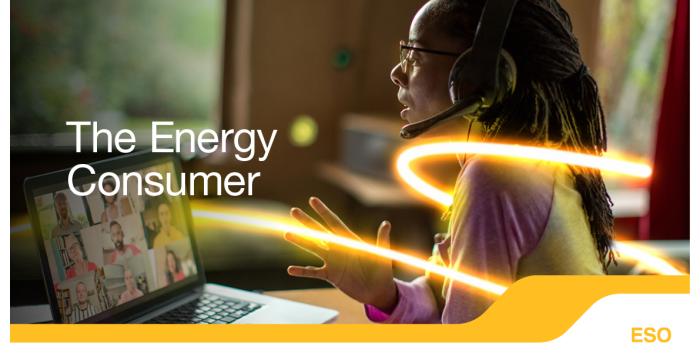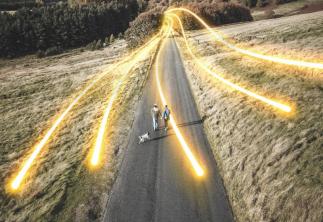Future Energy Scenarios (FES) represent a range of different, credible ways to decarbonise our energy system as we strive towards the 2050 target.
We’re less than 30 years away from the Net Zero deadline, which isn’t long when you consider investment cycles for gas networks, electricity transmission lines and domestic heating systems.
FES has an important role to play in stimulating debate and helping to shape the energy system of the future.

Save the date
FES 2024 will be published on Monday 24 June 2024 with a series of events taking place that week. Further details will be shared towards the end of April via our newsletter.

FES 2024 framework thought piece
Following decisions set out in Ofgem’s recent “Decision on the framework for the Future System Operator’s Centralised Strategic Network Plan”, our Future Energy Scenarios are evolving, which requires a new framework. We explain the key reasoning for this shift, and how our framework has evolved in a new article. You can read it here.

FES 2024 stakeholder feedback document
This document is a key stage of the annual FES cycle, providing information on our engagement since the launch of FES 2023, together with a summary of stakeholder views and how we plan to integrate these into the analysis and publication.

Consumer Building Blocks project
The Consumer Building Blocks innovation project, delivered alongside the Centre for Sustainable Energy and ERM, developed a model for predicting how consumers may adapt their energy consumption in a range of different factors. You can find the slides, a recording from the webinar that we hosted and the data from the project here:
Domestic archetypes Non-domestic archetypes (part 1)
FES 2023
The Future Energy Scenarios publication outlines a number of credible energy futures that mean we can continue to support the development of the energy system.
For faster reading, download our FES summary document, which highlights the key headlines and statistics from the full publication.
All the graphs, charts and supporting data published in FES 2023 from our modelling. If using Edge you need to download the file rather than view online.
Full suite of FES 2023 documents
Download our latest FES 2023 document suite and check out the archive of older FES documents.
Executive Introduction and key messages
Our key messages are built around what our analysis suggests is needed to achieve net zero emissions by 2050.
Two years ago, the Government announced its intention for the electricity system to be fully decarbonised by 2035. This ambitious target reinforced Great Britain’s existing global leadership in enabling low carbon electricity generation. The 2035 target gives us just over a decade to deliver a world-first, requiring a major transition across industry, regulation and government policy – a challenge that we need to meet head on.
This year’s FES continue to set out credible ways that the UK can achieve net zero by 2050, as well as the commitment to operate a decarbonised electricity system by 2035. Based on extensive stakeholder engagement, research and modelling, each scenario considers how much energy we might need, where it could come from and how we continue to maintain outstanding levels of system reliability. FES highlights one key overall theme – we must act now to achieve a clean, secure and fair energy system for all. If we don’t, a once in a lifetime opportunity will pass us by.
Over the coming 12-18 months the ESO will transition into the Future System Operator – taking a broader, whole system view on how GB can deliver on its net zero ambitions while maintaining a reliable and affordable energy supply.
Measures to reduce uncertainty are needed to ensure the UK delivers a net zero energy system that is affordable and secure.
Key recommendations
Net zero policy: The Government must continue to reduce investment uncertainty around the business case for net zero-critical technologies such as Long Duration Energy Storage (LDES), transport and storage of hydrogen and CO2, low carbon dispatchable power and negative emissions technologies. A clear plan is needed for the funding and development of hydrogen and CCUS projects beyond delivery of the first industrial clusters.
Focus on heat: There is a need to accelerate both the uptake of heat pumps and the decision on whether hydrogen will be used for large scale heating. While some progress is being made through the Boiler Upgrade Scheme, further policy support and incentives are needed to increase uptake rates of heat pumps. Alongside this, a clear decision on hydrogen for heating should be accelerated and heat pump targets and incentives reviewed accordingly.
Negative emissions: Negative emissions technology is required to enable a net zero energy system. Robust emissions accounting standards are needed to ensure both investor and public confidence in a negative emissions market. Further demonstration of innovative emissions removal technologies is required to reduce uncertainties over technology and commercial readiness.
Consumer behaviour and digitalisation are pivotal to achieving net zero but easy access to information and the right incentives are critical.
Key recommendations
Empowering change: There is a need to instil trust for consumers and they must be advised on how they can best engage in the energy transition. This could be delivered through an information campaign, supported by a national advice service. Ensuring the provision of better information at point-of-purchase (e.g. selection of tariffs as part of EV purchase) would enable consumers to benefit from cost savings and maximise the system benefits. Consumers will be further incentivised to greater levels of demand reduction through market changes that simplify the consumer journey and reward flexible energy use.
Digitalisation and innovation: Innovation and smart digital solutions are required to enable consumers to further benefit from energy savings at times when they are not able to manually adjust their demand. Smart digital solutions will enable effortless consumer participation in the delivery of a net zero energy system. Mandating technology manufacturers to include smart capability in their products is key to the delivery of smart homes. Further incentives and grants can encourage greater innovation and implementation of smart digital solutions. Successful delivery of Market wide Half Hourly Settlement will enable consumers to participate more readily in demand flexibility.
Energy efficiency: Further emphasis is needed to harness the potential of efficiency improvements in reducing energy demand. Energy efficiency improvements to the construction and technology within our homes must be accelerated. Radical overhaul is required to achieve this both in new build and existing housing stock. Targets for minimum energy efficiency standards should extend beyond the private rented sector. Additional incentives and grants must be considered to ensure energy efficiency improvements are available for more consumers.
Improved market signals and new distributed flexibility solutions are key to managing a secure, net zero energy system at lowest cost to the consumer.
Key recommendations
Distributed flexibility: The growth of distributed flexibility (flexible energy demand resources, such as storage, EVs, heat pumps and thermal storage, connected at distribution level) is a key enabler to achieving net zero. A market-wide strategy, including government targets, policy support and market reform is required to facilitate the significant growth in distributed flexibility. This can also provide incentives for consumers to provide Demand Side Response, such as smart charging of EVs.
Transport flexibility: Across all future scenarios, cars are primarily electrified, increasing electricity demand and requiring strategies to manage how they are charged and how system costs are recovered. Increasing implementation of smart EV charging is a no regret action to help reduce the impact on peak demand and reduce curtailment of renewables.
Commercial trials of Vehicle-to-Grid (V2G) business models are required to explore their viability and contribution system services. It also requires current challenges to be addressed, such as the slow rollout of charging infrastructure.
Locational signals: Market reform is needed to provide the real-time locational signals required to optimise decisions on when and where flexible energy sources are used. Improving locational signals has the potential to deliver significant cost savings to consumers and support the delivery of decarbonisation targets.
Benefits to the whole energy system must be considered to optimise the cost of delivering net zero technology and infrastructure.
Key recommendations
Strategic network investment: Strategic and timely investment across the whole energy system is critical to achieving decarbonisation targets and minimising network constraints. Accelerated coordinated planning and delivery of strategic, whole system investment through Centralised Strategic Network Planning (CSNP) will require continued collaboration and engagement with the Government, Ofgem, local communities, industry and the supply chain. Strategic network investment should be enabled through reforms to the planning system, while also balancing social and environmental impacts.
Connections reform: Connections reform is required to facilitate quicker, more coordinated and efficient connection to the GB electricity system to deliver net zero. Continued collaboration between Government, Ofgem and industry is critical. The process must be future-proofed to facilitate potential prioritisation of connections for delivery of whole system benefits and net zero in line with strategic network planning.
Location of large electricity demands: New large electricity demands, including electrolysers to convert electricity to hydrogen, will be required for net zero. This demand has significant potential to deliver whole system flexibility and reduced network constraints alongside decarbonisation. A coherent strategy is required to ensure large electricity demands are located where they provide the biggest benefit to consumers and the whole energy system.
FES 2023 Sections
Reaching net zero greenhouse gas (GHG) emissions by 2050 is critical to limiting the negative impacts of climate change. In this section, we look at potential emissions reductions across our Future Energy Scenarios (FES).
The energy consumer covers the residential, industrial, commercial and transport sectors and considers how decarbonisation affects individual consumers.
The energy system explores how total GB demand is met using decarbonised energy sources such as electricity, hydrogen, natural gas and bioenergy.















